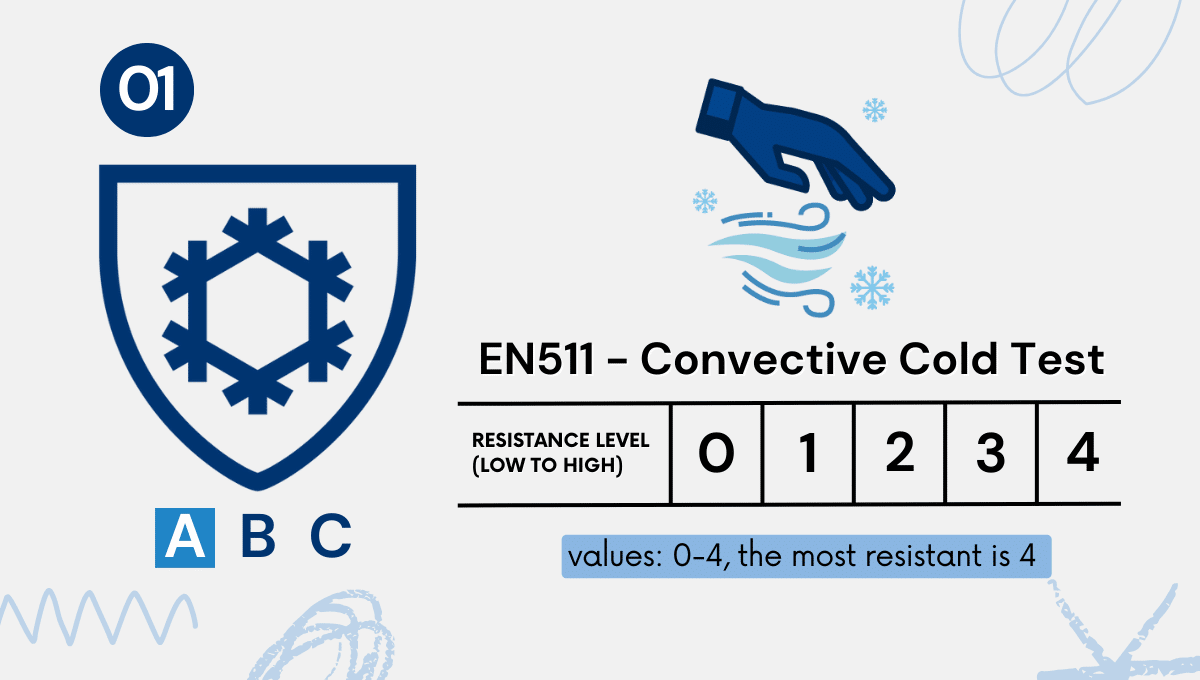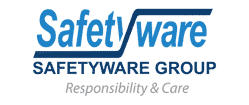What is EN511?
EN511 is a European standard that evaluates the performance of protective gloves against cold temperatures. It specifies the testing methods and performance levels for gloves that protect against cold when worn in environments where temperatures can drop to freezing levels or lower. This standard is especially relevant in industries like refrigeration, construction, and logistics, where workers are often exposed to sub-zero conditions.
The EN511 standard categorizes gloves based on their resistance to convective cold (cold air), contact cold (cold surfaces), and their water permeability (to prevent cold-induced injuries like frostbite).
What Does EN511 Testing Measure?
EN511 tests gloves in three primary areas:
1. Convective Cold Resistance (Performance Level 0-4)
This tests the glove’s ability to prevent heat loss when exposed to cold air. Gloves are subjected to wind and cold conditions, and their insulation properties are tested. The performance levels range from 0 (least protective) to 4 (most protective). The higher the number, the better the glove is at protecting against the cold.

2. Contact Cold Resistance (Performance Level 0-4)
This measures the glove’s ability to insulate the wearer from direct contact with cold surfaces, such as metal or icy materials. It’s an essential test for workers who handle cold machinery or materials. Like convective cold resistance, the levels range from 0 (least protective) to 4 (most protective).

3. Water Permeability (Pass/Fail)
This test assesses whether the gloves are waterproof or resistant to water penetration. Exposure to water can amplify the risk of cold-related injuries, so this test ensures that the gloves will not allow water to seep through and expose the skin to the elements. A “pass” rating means the glove has been tested and proven waterproof; a “fail” means the glove does not meet the necessary water resistance criteria.

Why is EN511 Testing Important?
For manufacturers, EN511 testing provides a guarantee that the gloves will perform as expected in cold environments. This is crucial for ensuring the safety and well-being of workers who rely on protective gloves for insulation and safety.
For users, EN511 certification offers peace of mind that the gloves will provide adequate protection in low-temperature settings, preventing injuries such as frostbite, hypothermia, and cold stress. Without proper protection, employees may be at risk of suffering from impaired dexterity, which can increase the likelihood of accidents and injuries.
How to Choose EN511 Certified Gloves
When selecting gloves for cold conditions, it’s essential to look for EN511 certification. Gloves that are tested and certified under this standard are marked with a symbol that includes the number 511 and performance levels for each of the three categories.
Key considerations include:
- Level of Cold Protection: Depending on the job and environment, you may need gloves with a higher level of resistance to cold.
- Dexterity: For tasks that require fine motor skills, choosing gloves with the right balance of warmth and flexibility is important.
- Waterproofing: If workers are exposed to wet conditions, ensure the gloves have a pass rating for water permeability.

Protect Yourself with Our EN511 Certified Cold-Resistant Gloves
At Safetyware, we offer a wide range of high-quality cold-resistant gloves that meet EN511 certification to ensure maximum protection in cold environments. Our gloves are designed to provide superior insulation, water resistance, and durability, helping workers stay safe and comfortable in freezing conditions.
Explore our collection of EN511-certified cold-resistant gloves here: Safetyware Cold-Resistant Gloves
Choose the right gloves for your needs and ensure you and your team stay protected from the dangers of the cold.
📞 Contact Us Now!
💻 Visit: www.safetyware.com
📧 Email: [email protected]
Stay Safe. Stay Protected. Choose Safetyware.

